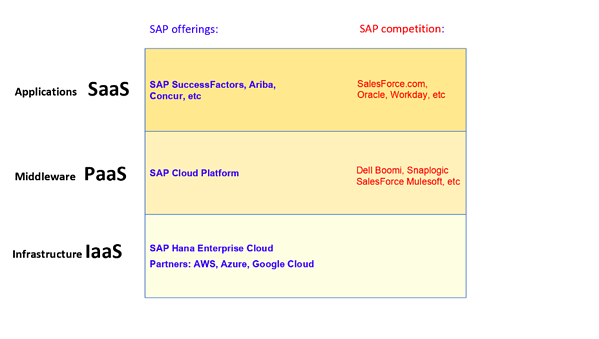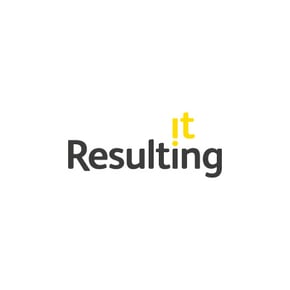So there I was, having a few amazing beers at the Farnham Real Ale Festival last week with some mates, when one of them asked me a stupid question:
“So what are your Gartner Greatest Hits then?”.
That threw me.
“What do you mean?” I said.
“Well, if you worked for them for 2 decades what were the most fun bits and what did clients want to chat to you about the most?”.
“Blimey, what great questions guv!” was all I could offer.
So that set me thinking and at the end of the evening those amazing beers worked their magic and I had the answers…
Well the most fun bit - that was dead easy.
You won’t believe it, but if you pay me enough money I will send you a photo.
(If you pay me even more money I can even share a very embarrassing video!)
You see, Gartner presentations were always so deadly boring, so my analyst friend Alexa persuaded me to join her in her presentation about SAP software licensing.
Four of us crazy analysts dressed up in full Abba costume.
After weeks of practice we danced and mimed to Money, Money, Money at the start, plus The Name Of The Game at the end of her presentation.
Yes, really…
So, what about the top 5 questions that Gartner clients all around the world asked me?
Here goes:
- How will Cloud technology affect SAP customers?
- When should we upgrade from SAP ECC to SAP S/4HANA?
- Yes but, can you help me build my business case for upgrading to S/4HANA?
- How do I get value out of SAP Solution Manager?
- What are the secrets of the most successful SAP customers?
In future articles I plan to dig into all of these recurring questions much deeper.
Actually the last one still really worries me.
After decades of SAP R/3 and SAP ERP implementations there seems to be a hell of a lot of unsuccessful SAP customers all around the world.
Worse than that the number of CIOs who plan to ditch SAP completely or freeze it seems to be on the rise.
So, please check out our recent SAP Success Report straight away.
How will Cloud technology affect SAP customers?
As we all know, IT is great.
But IT is so full of hype and hot air about new technologies.
The rate of introduction of new technologies is simply going through the roof, which is why Gartner is so busy.
Cloud is one such technology, now no longer that new of course, but with huge impact on SAP, its ecosystem and most importantly, it’s customers.
Cloud technology means that SAP customers run their SAP software no longer in their own data centres, but in someone else’s Cloud data centre, i.e. SAP or a partner.
SAP has been telling Wall Street for the last 5 years that they were a software licenses company, but now “we’re a Cloud company, honest!”.
When I spoke to one Gartner client in Spain who was a CIO, she said that her CFO wanted Cloud because they wanted:
- More agility – Deploying IT systems faster and the belief that you can ramp Cloud systems up or down more quickly.
- Changing the financial model – The ability to fundamentally shift the IT financial model from a traditional CAPEX one, to an OPEX approach.
- Pay As You Go (PAYG) – The ability at the same time to opt for a PAYG payment approach.
- Lower Total Cost of Ownership (TCO) – A clear expectation of a lower TCO. Be careful though, this is not always the case and the reverse may be true. It’s all in the detail.
But wait a minute, Cloud technology means different things to many different companies.
So, from an SAP customer perspective we have to define what we really mean by Cloud here. Take a look at the following diagram to understand the basic three layers of Cloud.

The diagram lists some of the more important offerings from SAP and its competitors.
So when talking to Gartner clients about Cloud I always started with this simple diagram.
Note the three acronyms:
- Software-as-a-Service (SaaS) Cloud Applications
- Platform-as-a-Service (PaaS) Cloud Middleware
- Infrastructure-as-a-Service (IaaS) Cloud Infrastructure
How good are SAP SaaS applications?
Clients always asked me this question. Today SaaS is hot. SaaS application services tend to:
- be heavily pre-configured
- feature modern user interfaces
- be updated very quickly by the SaaS vendor
SaaS solutions therefore tend to be very standardised so they can be shared on so-called Public Cloud infrastructures.
It has been a struggle for SAP to make the leap from selling licensed applications (e.g. SAP ECC, SAP BW) to selling SaaS solutions to catch up with the big CRM vendor players like Salesforce.
SAP’s response to this challenge was acquisition of other successful SaaS specialist vendors. Over the last 8 years SAP’s acquisition totals $28.6BN, acquiring, amongst others:
- SuccessFactors
- Ariba
- Concur
- Fieldglass, and recently
- Callidus
SAP’s latest fourth generation ERP solution is S/4HANA which can be installed both on-premise in a customer (or outsourcer) data centre, or as an SAP SaaS solution.
Generally, SAP customers prefer to keep their SAP ERP applications on-premise because they are so customised and so mission-critical that customers themselves need to tightly control them. So SAP has struggled with it’s new ERP solution, called SAP S/4HANA Cloud.
That said, SAP customers are often willing to buy the acquired SAP SaaS solutions, if the deal is right.
Why do I need PaaS tools?
Lots of clients I spoke to were really expert when it comes to ABAP, BAPIs, RFCs, i.e. traditional SAP development and integration tools.
The middle Cloud layer always includes the lower layer to offer a modern, integrated, software “platform”, delivered from a Cloud vendor’s data centre.
“So tell me Derek - why then do I need these new PaaS tools?”.
Fundamentally PaaS offers a modern software development environment to build entirely new SaaS applications.
PaaS tools can be used to extend existing SaaS applications with their most important use case being to provide flexible and reliable application software integration mechanisms between existing SaaS solutions and on-premise applications.
SAP offers its own PaaS toolset here, called SAP Cloud Platform.
It is a strong product and is used by SAP and some partners as the development environment to build and run brand new applications.
Such applications can incorporate the very latest Internet of Things (IoT), Artificial Intelligence, Machine Learning and Business Analytics technologies.
Is it safe for me to run my SAP ERP applications on Cloud infrastructure?
Without a doubt this was the real Cloud question that SAP customers wanted most advice about.
IaaS for SAP – especially for SAP HANA solutions – is really hot.
Existing licensed SAP on-premise applications like SAP ECC can be run in an IaaS Cloud data centre without impacting the vital application layer, which customers always want to control.
One client in Denmark phoned me and said “Derek, our HP hardware in our data centre is already end of life. My boss wants to run SAP ECC in the cloud, what do you think?”.
This was a real crunch point for that client, should they:
- Buy new CAPEX hardware for their data centre?
OR
- Switch to an SAP Managed Cloud service provider to start consuming IaaS, instead of running their own hardware in their data centre?
SAP customers typically prefer a certified SAP Managed Cloud service provider who includes SAP Basis operations services on top of the IaaS.
SAP Basis plus IaaS represents complete technical responsibility for the SAP systems, including the database – SAP HANA, for example.
Today’s SAP customers usually prefer Private Cloud IaaS over Public Cloud IaaS because it features more dedicated systems, rather than shared ones.
Some examples of SAP Managed Private Cloud service providers which include SAP Basis operations services are:
- SAP - with their HANA Enterprise Cloud (HEC) service for HANA-based systems
- Hardware vendors - e.g. HP, through their DXC spin-off, IBM, Hitachi (who acquired oXya)
- Traditional SAP outsourcing (run) vendors - e.g. Atos, Capgemini, Accenture, HCL, Infosys
- Newer specialists - e.g. Virtustream, Symmetry, T-Systems
- Country-based specialists - e.g. itelligence, Ensono
The major Public Cloud IaaS vendors offering SAP systems are:
- Amazon Web Services (AWS)
- Microsoft Azure
- Google Cloud
These vendors have such deep wallets that they claim to offer much larger scale data centres and potentially lower cost infrastructure.
Because none of the Public Cloud IaaS vendors include SAP Basis operations services, they partner with other SAP service providers to offer a complete solution.
For example, AWS partners include the big guys i.e. Accenture, Capgemini and Infosys, but they are also teaming up with many smaller, niche, SAP service providers, like Lemongrass and Keytree here in the UK.
When an SAP customer moves its SAP systems to an SAP Managed Cloud service provider they typically expect these vendors to offer a mission-critical run service, often with some sort of disaster recovery backup data centre.
The bottom line here is that a large proportion of SAP customers are indeed going for the Cloud IaaS option. It is a relatively safe first step in the apparently unstoppable trend to run your business applications in the Cloud.
Download "Fifty shades of blue: the secrets to taking control of your S/4HANA journey" for everything you need to know about S/4HANA migration.
Dr Derek Prior spent 19 years as an analyst specialising in SAP at Gartner and AMR Research, advising organisations all around the world on SAP strategy and best practices.
-----












